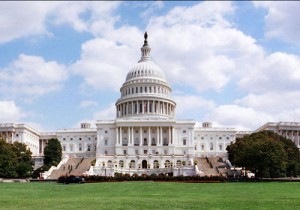Only Minimal Medical Evidence Sufficient to Grant Trial Preference by California Court of Appeal
By Jaimie Buchbinder, Oakland on April 6, 2018
California just made it easier for plaintiffs to get mandatory trial preference. Fox v. Metalclad Insulation LLC required that preference be granted based on a mere attorney declaration comprised of generic symptoms of an over-70 year old plaintiff, and even though plaintiff is in partial remission.
 California allows plaintiffs to move for a preferential trial date in certain circumstances depending on the age or health of the plaintiff. If granted, the judge must set the matter for trial no more than 120 days from the date the motion was granted, with a maximum continuance of up to 15 days. The mandatory preference statute requires the granting of preference if three elements are satisfied: (1) plaintiff is over 70 years old; (2) he/she has a substantial interest in the action; and (3) “[t]he health of the party is such that preference is necessary to prevent prejudicing the party’s interest in the litigation.” The focus of the Fox decision was primarily on the third, more subjective requirement.
California allows plaintiffs to move for a preferential trial date in certain circumstances depending on the age or health of the plaintiff. If granted, the judge must set the matter for trial no more than 120 days from the date the motion was granted, with a maximum continuance of up to 15 days. The mandatory preference statute requires the granting of preference if three elements are satisfied: (1) plaintiff is over 70 years old; (2) he/she has a substantial interest in the action; and (3) “[t]he health of the party is such that preference is necessary to prevent prejudicing the party’s interest in the litigation.” The focus of the Fox decision was primarily on the third, more subjective requirement.
Trial Court
Ms. Fox sued eighteen defendants, alleging that she developed stage IV lung cancer, asbestosis, and asbestos-related pleural disease as a result of shaking and laundering her husband’s work clothing. Plaintiffs filed a motion for preference, almost a year after the initial filing of the case, supported solely by (1) an attorney declaration, with attached medical records, and (2) a declaration from Ms. Fox describing her recent medical history and current symptoms, including “fogginess in [her] thought process that impairs [her] ability to focus, concentrate and effectively communicate.” The defense opposition argued that 1) the two declarations failed to demonstrate that plaintiff’s health necessitates the granting of preference and 2) that the court should balance interests, including defendant’s due process rights, when ruling on this motion. Judge Ming-mei Lee of San Francisco Superior Court denied plaintiffs’ motion, noting that plaintiffs “failed to demonstrate that the health of Ardella Fox is such that preference is necessary to prevent prejudicing her interest in the litigation.” Plaintiffs sought a writ of mandate to compel the trial court to grant their motion.
Appellate Court
The appellate court granted the petition and issued the writ. The court extrapolated information about her current condition from her attorney’s declaration including that she is undergoing chemotherapy every three weeks, suffers from “chemo brain” leading to brain fog, and is getting increasingly weaker.
The court ruled that an attorney declaration relying on hearsay and conclusions suffices under the mandatory preference statute (although under a companion discretionary statute, “clear and convincing medical documentation” is required). Finally, the court addressed when a party’s health would make preference necessary. Here, the court found that plaintiff’s diagnoses, accompanied with her treatment, “constant discomfort,” and deteriorating mental state necessitated preference, despite her partial remission. “The absence of more specifics about Ms. Fox’s prognosis was insufficient reason to deny the Foxes’ request for calendar preference.” The court rejected defendant’s arguments that a balancing of interests must be conducted, concluding that no balancing of defendant’s due process rights or fundamental fairness was necessary. Finally, the court held that plaintiffs’ should not have to wait to file a preference motion until plaintiff “is clearly in her final days,” because this would subvert the legislative intent of granting preference to prevent prejudice.
After Fox, plaintiffs will have an easier time showing that their health makes it necessary to grant preference, as even a plaintiff in partial remission got preference granted.
As it points out, the bar for evidence to oppose (and win) this type of motion is very high. “If by way of opposition, [the defense] had submitted, say, a photograph of 81-year-old Ms. Fox scuba-diving in the Galapagos Islands just last fall, there might be some basis to expect more medical detail, but on this record we see no genuine dispute that Ms. Fox is very sick.” This decision is a win for asbestos plaintiffs in California and defendants should be aware of this decision and the high standard set for opposing preference motions.

 In Turley, defendant Familian moved for summary judgment on the basis that the plaintiffs could not show exposure to asbestos in a Familian-brand product. The plaintiffs’ opposition to the motion included a declaration from a third-party witness who had not been deposed, but who testified that defendant-supplied asbestos-containing gaskets were frequently used on the many high-pressure and/or high-temperature valves at the two compressor stations supervised by the plaintiff, and that the plaintiff was commonly present when the work of replacing the asbestos-containing valves was being done. The trial court ruled that this was speculative and granted summary judgment.
In Turley, defendant Familian moved for summary judgment on the basis that the plaintiffs could not show exposure to asbestos in a Familian-brand product. The plaintiffs’ opposition to the motion included a declaration from a third-party witness who had not been deposed, but who testified that defendant-supplied asbestos-containing gaskets were frequently used on the many high-pressure and/or high-temperature valves at the two compressor stations supervised by the plaintiff, and that the plaintiff was commonly present when the work of replacing the asbestos-containing valves was being done. The trial court ruled that this was speculative and granted summary judgment. A growing number of cases allege that chemical exposures sustained by parents have resulted in birth defect injuries to their children. One case went to defense verdict in Southern California this year (Morales v. Well Pict, Ventura County) and additional cases have been filed both in California and elsewhere. Many of these cases are referred to as “clean room” cases, because the earliest of them involved workers claiming exposure to toxic chemicals used in “clean room” environments producing computer components. Two decisions in California have grappled with the application of two different statutes of limitations that might apply in such circumstances and have reached directly inconsistent conclusions. The
A growing number of cases allege that chemical exposures sustained by parents have resulted in birth defect injuries to their children. One case went to defense verdict in Southern California this year (Morales v. Well Pict, Ventura County) and additional cases have been filed both in California and elsewhere. Many of these cases are referred to as “clean room” cases, because the earliest of them involved workers claiming exposure to toxic chemicals used in “clean room” environments producing computer components. Two decisions in California have grappled with the application of two different statutes of limitations that might apply in such circumstances and have reached directly inconsistent conclusions. The  The California Court of Appeal in
The California Court of Appeal in  For those not familiar with Prop. 65, it is a California regulatory scheme whereby producers and distributors of any products and foods used or consumed in California must apply a cancer/birth defect warning on their products if they contain any of 800 different identified substances in levels that might lead to an exposure in excess of the mandated permissible levels. The regulations allow any attorney in California to act as a “private attorney general” to bring suit against anyone who has not properly warned. These suits can lead to injunctive relief, fines and penalties, and perhaps most importantly, an award of plaintiff’s (but not defendant’s) attorneys’ fees.
For those not familiar with Prop. 65, it is a California regulatory scheme whereby producers and distributors of any products and foods used or consumed in California must apply a cancer/birth defect warning on their products if they contain any of 800 different identified substances in levels that might lead to an exposure in excess of the mandated permissible levels. The regulations allow any attorney in California to act as a “private attorney general” to bring suit against anyone who has not properly warned. These suits can lead to injunctive relief, fines and penalties, and perhaps most importantly, an award of plaintiff’s (but not defendant’s) attorneys’ fees. To meet their burden in an asbestos case, plaintiffs must show that there is exposure to a defendant’s product that was “in reasonable medical probability” a substantial factor in bringing about the injury. (Rutherford v. Owens-Illinois, Inc. (1997) 16 Cal.4th 953, 982.) Many factors are considered to determine if the exposures are substantial factors, including frequency, proximity and duration of the exposures. The evidence in this case merely suggested it was possible that Mr. Petitpas brought asbestos dust home on his clothing from his inspection of construction jobs. He only did this for an hour a day and returned to his office for the remainder. Neither Plaintiff testified that Ms. Petitpas shook out his clothes when washing them. Further, it was merely possible she was exposed when visiting the construction sites, because there was no active construction occurring and there was no visible dust. Mere presence of asbestos at a site was simply not sufficient to show that asbestos-containing products used at these sites was a substantial factor in causing Ms. Petitpas’ mesothelioma.
To meet their burden in an asbestos case, plaintiffs must show that there is exposure to a defendant’s product that was “in reasonable medical probability” a substantial factor in bringing about the injury. (Rutherford v. Owens-Illinois, Inc. (1997) 16 Cal.4th 953, 982.) Many factors are considered to determine if the exposures are substantial factors, including frequency, proximity and duration of the exposures. The evidence in this case merely suggested it was possible that Mr. Petitpas brought asbestos dust home on his clothing from his inspection of construction jobs. He only did this for an hour a day and returned to his office for the remainder. Neither Plaintiff testified that Ms. Petitpas shook out his clothes when washing them. Further, it was merely possible she was exposed when visiting the construction sites, because there was no active construction occurring and there was no visible dust. Mere presence of asbestos at a site was simply not sufficient to show that asbestos-containing products used at these sites was a substantial factor in causing Ms. Petitpas’ mesothelioma. In Phillips v. Honeywell International Inc. (March 17, 2017. Case F070761) — Cal.App.5th –, the court held that the trial court properly admitted a 1966 letter from an employee who was not an officer, director, or managing agent. The letter is well known (described in the opinion as “infamous”) in asbestos litigation as “the E.A. Martin letter,” and is the frequent subject of in limine motions. Martin was a purchasing director, and he was writing to one of his asbestos suppliers, sarcastically addressing an article in Chemical Week magazine: “[I]f you have enjoyed a good life while working with asbestos products why not die from it. There’s got to be some cause.”
In Phillips v. Honeywell International Inc. (March 17, 2017. Case F070761) — Cal.App.5th –, the court held that the trial court properly admitted a 1966 letter from an employee who was not an officer, director, or managing agent. The letter is well known (described in the opinion as “infamous”) in asbestos litigation as “the E.A. Martin letter,” and is the frequent subject of in limine motions. Martin was a purchasing director, and he was writing to one of his asbestos suppliers, sarcastically addressing an article in Chemical Week magazine: “[I]f you have enjoyed a good life while working with asbestos products why not die from it. There’s got to be some cause.” On December 1, 2016, the
On December 1, 2016, the  Mr. Kase claimed exposure to asbestos-containing insulation products while working on US Navy nuclear submarines in the 1970’s. The court pointed out that unlike other defendants who have in the past unsuccessfully attempted to assert the defense, Metalclad did not design or produce a piece of hardware or equipment. Instead, Metalclad was a broker of Unibestos. The court finds the government contractor defense was properly asserted for Metalclad while simultaneously acknowledging other decisions that have denied its application for equipment manufacturers. We are left with the predicament wherein a broker who distributes Unibestos can assert the government contractor defense, whereas an equipment manufacturer who has its products insulated with Unibestos cannot. The court notes that the record demonstrated that the Unibestos product at issue was never in the possession of Metalclad. Instead, Metalclad had only arranged for its delivery to the shipyard.
Mr. Kase claimed exposure to asbestos-containing insulation products while working on US Navy nuclear submarines in the 1970’s. The court pointed out that unlike other defendants who have in the past unsuccessfully attempted to assert the defense, Metalclad did not design or produce a piece of hardware or equipment. Instead, Metalclad was a broker of Unibestos. The court finds the government contractor defense was properly asserted for Metalclad while simultaneously acknowledging other decisions that have denied its application for equipment manufacturers. We are left with the predicament wherein a broker who distributes Unibestos can assert the government contractor defense, whereas an equipment manufacturer who has its products insulated with Unibestos cannot. The court notes that the record demonstrated that the Unibestos product at issue was never in the possession of Metalclad. Instead, Metalclad had only arranged for its delivery to the shipyard. The California Supreme Court earlier this week issued an opinion that, in the words of the dissent, allows for “jurisdiction by joinder.” (Bristol-Myers Squibb Co. v. Superior Court (Anderson), Case No. S221038.) Plaintiffs with claims arising wholly outside California, against non-California defendants, may nevertheless be entitled to jurisdiction in a California court. The keys appear to be (a) whether the claims are similar to those of California residents (b) who are also plaintiffs in the suit (c) against a defendant that conducts significant activity in California as well as elsewhere. While Bristol-Myers most directly applies to large entities in mass tort cases, its rationale could well extend to any lawsuit in which a product was sold or activity conducted in multiple states. The 4-3 decision may also be the subject of a petition for certiorari to the United States Supreme Court.
The California Supreme Court earlier this week issued an opinion that, in the words of the dissent, allows for “jurisdiction by joinder.” (Bristol-Myers Squibb Co. v. Superior Court (Anderson), Case No. S221038.) Plaintiffs with claims arising wholly outside California, against non-California defendants, may nevertheless be entitled to jurisdiction in a California court. The keys appear to be (a) whether the claims are similar to those of California residents (b) who are also plaintiffs in the suit (c) against a defendant that conducts significant activity in California as well as elsewhere. While Bristol-Myers most directly applies to large entities in mass tort cases, its rationale could well extend to any lawsuit in which a product was sold or activity conducted in multiple states. The 4-3 decision may also be the subject of a petition for certiorari to the United States Supreme Court.